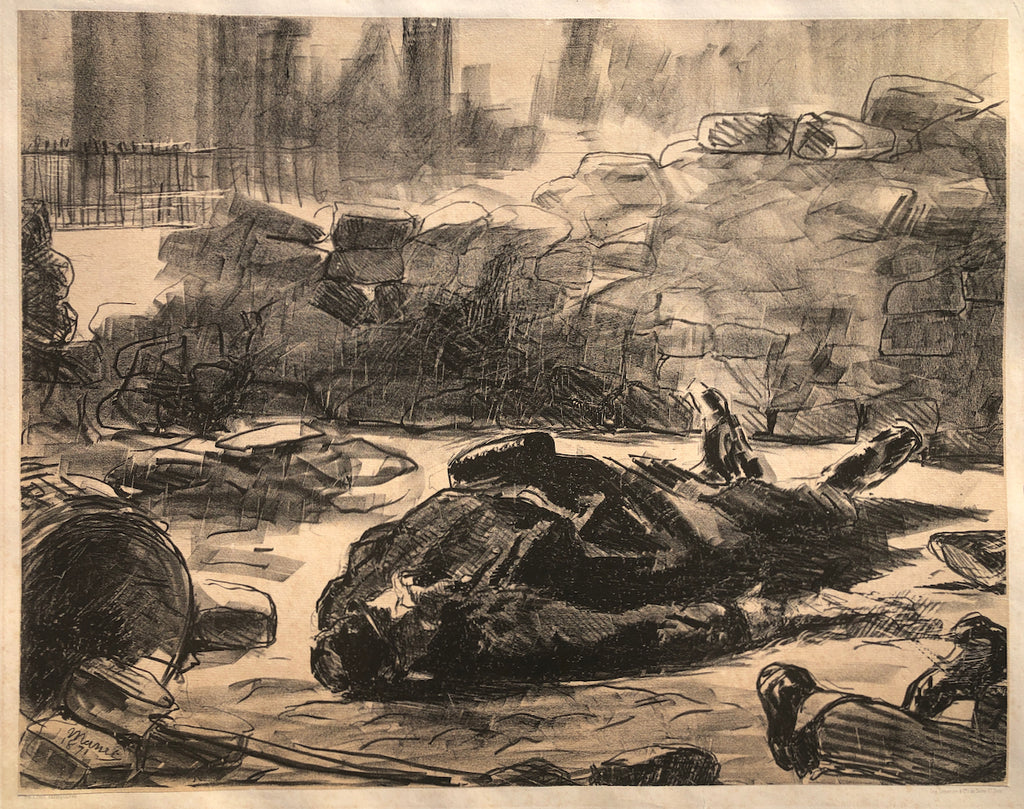
Click image to enlarge
Edouard Manet, French, (1832-1883), GUERRE CIVILE (CIVIL WAR)
Lithograph on chine colle, 1871-73. The second state of two. Printed and Published by Lermercier, Paris, 1874. 15 5/8 x 20 inches, 397 x 508 mm. (image), 19 1/8 x 24 3/4 inches, 486 x 629 mm. (sheet). In very good condition, with some loss to the lettering of the title, light foxing, mostly to the mount, a few repaired tears to the full margins and a faint mat line around the image.
During the Franco-Prussian War in 1870-71, Paris was defended by the National Guard. In the midst of the war, the Emperor Napoleon III was deposed and the Third Republic was declared. The Paris Commune, an alliance of National Guard soldiers and working class men, seized power in opposition to the government of the Republic, triggering the Civil War which is the subject of Manet's print. The Commune held out against the government's superior forces for a little more than two months, when it was defeated during what became known as "Bloody Week," marked by many atrocities and the deaths, imprisonment, and exile of thousands of Communards. The graphic power and social relevence of this print bear witness to Manet's mastery as a draftsman and the brutal reality of this tragic event. The dramatically foreshortened figure of the dead man at center is a deliberate reference to Manet’s own Dead Toreodor painting of 1864. In restating this memorable pose, Manet strips away any notion of romantic or heroic nobility, instead confronting us with the voracious, inelegant, randomness of death during wartime. The uncertain volatility of our own current civil divisions and those abroad cannot help but point again to the agency of this masterpiece of mid ninteenth century printmaking.
During the Franco-Prussian War in 1870-71, Paris was defended by the National Guard. In the midst of the war, the Emperor Napoleon III was deposed and the Third Republic was declared. The Paris Commune, an alliance of National Guard soldiers and working class men, seized power in opposition to the government of the Republic, triggering the Civil War which is the subject of Manet's print. The Commune held out against the government's superior forces for a little more than two months, when it was defeated during what became known as "Bloody Week," marked by many atrocities and the deaths, imprisonment, and exile of thousands of Communards. The graphic power and social relevence of this print bear witness to Manet's mastery as a draftsman and the brutal reality of this tragic event. The dramatically foreshortened figure of the dead man at center is a deliberate reference to Manet’s own Dead Toreodor painting of 1864. In restating this memorable pose, Manet strips away any notion of romantic or heroic nobility, instead confronting us with the voracious, inelegant, randomness of death during wartime. The uncertain volatility of our own current civil divisions and those abroad cannot help but point again to the agency of this masterpiece of mid ninteenth century printmaking.